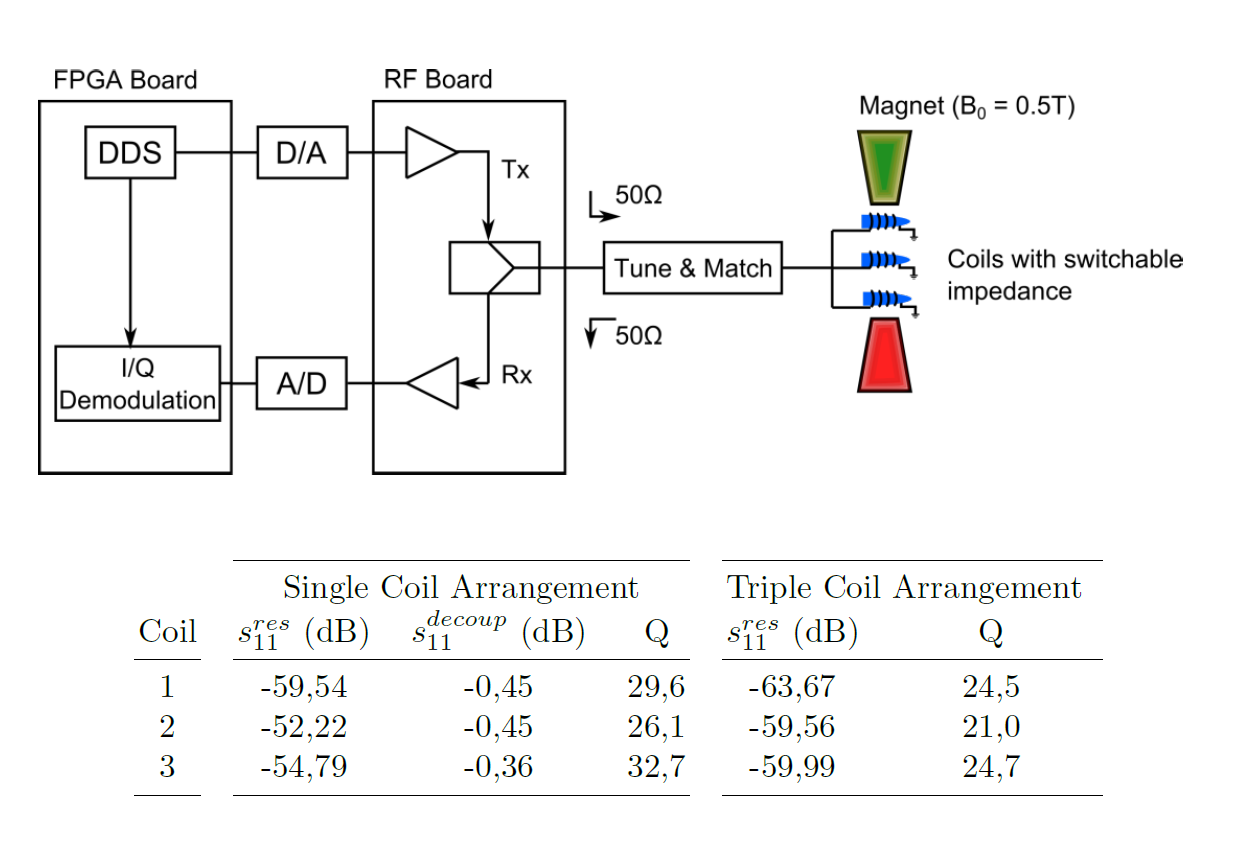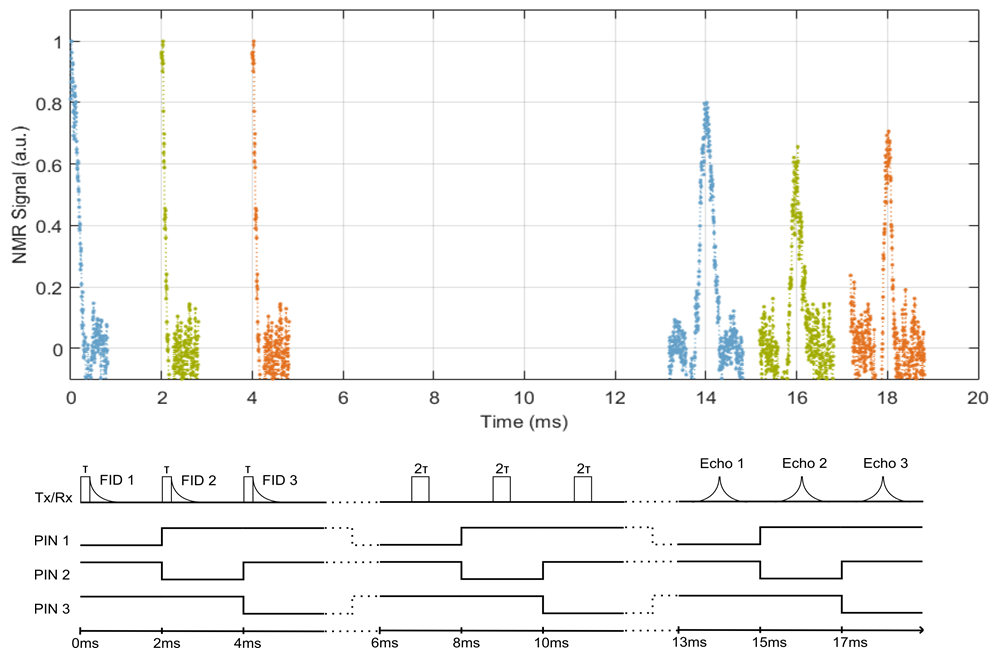Portable Multi-Coil NMR Relaxometer
- Technische Universität München, IMETUM, Garching, Germany
To speed up NMR relaxation measurements for low field applications we developed a cheap and portable multi-coil NMR device.
A custom NMR console consisting of a FPGA board and a RF board was designed. The NMR console has a single 50 Ω coil port which is used to drive three solenoid NMR coils. Each coil is resonant at the Larmor frequency for a magnetic field of 0.5 T and matched to 50 Ω. By using an active PIN diode circuit it can be decoupled and switched into a high impedance state. The reflection coefficient and the quality factor was analyzed for each single coil and compared to the triple coil arrangement.
For NMR relaxation measurements the triple coil setup was put into the magnetic field of a 0.5 T permanent magnet. The coils were aligned parallel with respect to each other. The distance of the coil centers was 4 mm. Each coil was loaded with 5 μl tap water. To measure simultaneously three FIDs and three Spin Echos a custom sequence was used which controls the pulses and the PIN diodes.

The NMR console had a receive gain of 85 dB and a transmit power of 27 dBm. The noise figure was 3 dB.
At the Larmor frequency each single coil can be switched between a resonant and a high impedance state which is shown in figure 1. For the triple coil arrangement the reflection coefficients are comparable and the quality factors decrease which can be explained by the imperfect decoupling of the coils. The switching between the coils takes less than 100 μs.
With the sequence shown in figure 2 a Spin Echo experiment with an echo time of 7 ms was performed. All FIDs have T2* times smaller than 100 μs. This corresponds to an inhomogeneity of the external field greater than 40 ppm. The different T2 decays result from the inhomogeneities of the external field.

The NMR capability of our mobile multi-coil NMR setup was demonstrated by measuring simultaneously three FIDs and three Spin Echos. The low T2* times suggest to move to a magnet with higher homogeneity. The SNR can be improved by using NMR coils with a higher quality factor. The method seems to be promising for an extension to more than three coils.
